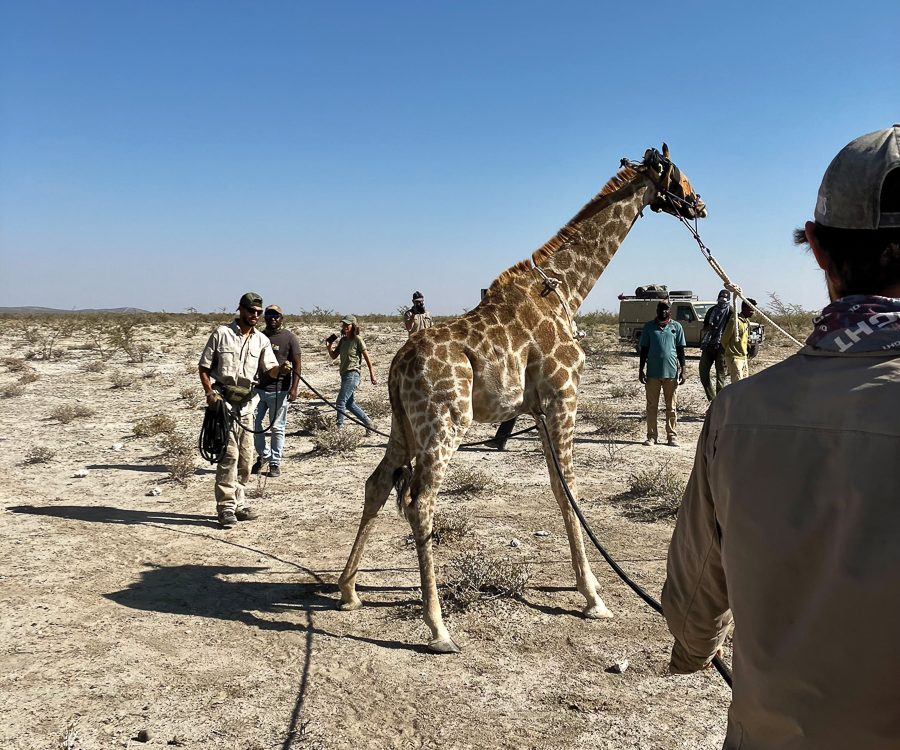Namibia: Protected areas, climate change and the green economy
May 6, 2013Branding Namibia’s parks and wildlife – a new logo
May 6, 2013Ready for the tough challenge
Text Rosalia Iileka
“It was a wonderful experience to be involved in and work with the SPAN Project from its inception in 2006 up until its closure in 2012,” says Colgar Sikopo, who has now taken over the responsibility of managing Namibia’s Protected Areas as Director of Regional Services and Parks Management.
Colgar joined the Ministry of Environment and Tourism in 1997 as a ranger responsible for the Anti-Poaching Unit at the Hardap Game Park before becoming warden for the park the following year. “Hardap was a good start for me. It’s a small park, with a small management unit and a small population of black rhinos, but with a busy schedule of monitoring and management of wildlife and other natural resources. I enjoyed the rhino monitoring so much that when I left the park one of the rhinos was named Sikopo by my colleagues,” says Colgar.
In 1999 Colgar moved to Rundu to become Chief Warden for North-East Parks. Five years later he became Chief Control Warden for North-East Regional Services and went on to become Deputy Director for Wildlife Management in July 2007 when he moved from Rundu to Windhoek. Colgar says the north-eastern regions of the Caprivi and Kavango gave him hands-on experience in dealing with human wildlife conflict, working with communities in CBNRM, integrated park management, wildlife crime prevention and law enforcement, transfrontier conservation and administration of a large component of personnel. In July 2012 he took over as Director of Regional Services and Parks Management following the retirement of the late Ben Beytell, a position Colgar describes as ‘not easy’. However, he was quick to mention, he is ready for the tough challenge and ‘will definitely win’.
“I receive more than 40 calls a day from colleagues, farmers, communities, conservancies, government offices, NGOs, the private sector, schools and others. I have to admit that many of these calls are about human wildlife conflict, and having been involved in the drafting of the National Policy on Human Wildlife Conflict Management (in which SPAN was actively involved) makes it easier for me to respond,” says Colgar.
As with that of many other children who grew up in his village, Colgar’s childhood involved herding cattle over weekends and during holidays, as he was in primary and junior secondary school at Bukalo, Kabbe and Izimwe in the Kabbe Constituency of the Caprivi Region. He then went on to complete his secondary school education at Kizito College and Mavuluma Secondary School in Katima Mulilo, before pursuing his tertiary education in Nature Conservation and Environmental Management.
“Having been a boy scout, which gave me the opportunity to visit the national parks in the Caprivi Region, persuaded me to go and study nature conservation, but it was also partially because of a letter which Michael Sibalatani sent me when he was a first-year Nature Conservation student at the Polytechnic of Namibia in which he informed me of what the course was all about,” says Colgar.
For Colgar there is no doubt that the overall objective of increasing management effectiveness in the national protected areas network and improving partnerships between the protected areas authority and other stakeholders so as to better safeguard biodiversity has been achieved with the involvement of the SPAN Project.
“SPAN has worked with the Ministry of Environment and Tourism over the past six years to strengthen protected areas as a cornerstone of the nation’s efforts to protect Namibia’s flora and fauna. This, in turn, has significantly contributed to the achievement of the Millennium Development Goal 7, and our own National Development Plans,” confirms Colgar. His highlights of the SPAN Project include providing support for the proclamation of national parks, the improvement of the policy and legal framework, institutional capacity and mechanisms concerning protected area management, and financing.
With such an enthusiastic leader as Colgar in the driving seat, the Directorate is poised to reach even greater heights in the years ahead.
This article was originally published in the 2013 Conservation and the Environment in Namibia magazine.


